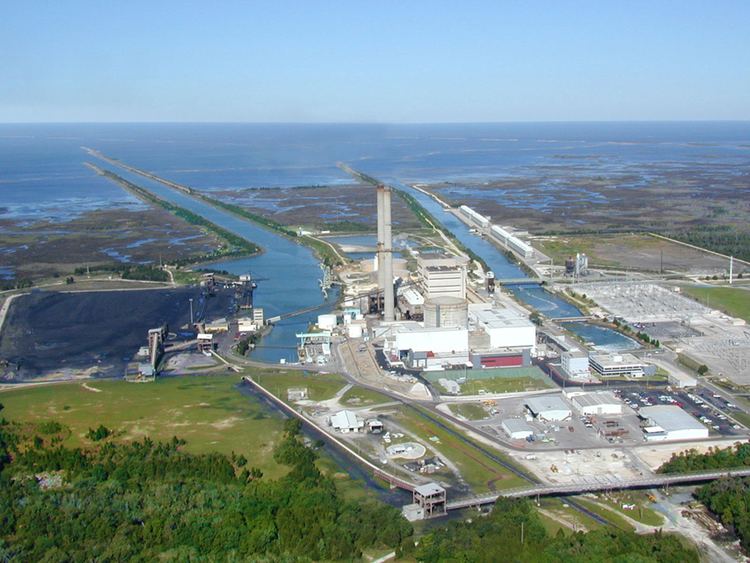Every year the Florida HRS* would do a low level survey of nuclear power plants in the state. My flying club regularly got the contract, because Lenny always sold our services dirt cheap. I was paid a very low rate per flight hour (something like $10, I can’t remember) to fly surveys around the Florida Nuclear Power Plants. In particular they hired us to survey St. Lucie and Crystal River.

They would hire us to fly in 16 “quadrants” (I don’t know what the “ants” for sixteen is) around the plant looking for the following items:
- Nearest inhabitable dwelling
- Nearest greens producing garden
- Nearest milk producing animal
Since I studied Solid State physics for my M.S., I was fully aware of what we were looking for: Evidence of radioactive material leaks. Strontium 90 would affect any milk producing animal, and gamma radiation would mess up a garden. They were mapping where to look … just in case. Scary if you think about it.

I worked with two guys, Bob and Larry. Bob sat right behind me, looking out the back left window of the C-172. Larry drove a big old Chevy Suburban with lots of antennas sticking out of it. I discovered that was so he could communicate with Bob in my back seat.
Today we were flying the plane I’d had many “occurrences” in – N75885, a C-172M. You’ll remember it from many of my other stories. It had just emerged from the 100 hour inspection. (Cue the foreboding music!)
The plan was to fly around the area, looking for places that Larry would investigate. That was the plan any way.
Day One
I met Bob at 7am at Executive Air Center. We were flying to to Fort Pierce (KFPR), which is where we would meet up with Larry and set up our “Base Ops.” We didn’t set up anything, but we had breakfast at the Airport Tiki and looked at their very specialized ground charts, broken in to 16 “slices” around the power plant.
On our way over to the site, I was at about 2500′ when I noticed my oil pressure had dropped to zero. “Bob, I’m showing zero oil pressure. It’s probably the gauge, but I’d like to head back and have someone look at it.” He agreed.
We did a 180 and informed FPR Tower that we were showing no oil pressure. They cleared me to land straight in on what is now runway 32, (although I think it was 31 back then, before the magnetic deviation changed so much.)
I kept my altitude up just in case. I pulled back to idle at 2500′ about 3 miles from the runway and did a steep glide in. I slowed down in the last half mile and put it on the runway very smoothly (if I must say so myself.) Tower cleared me directly to the ramp as I turned left off the runway. Just as I turned off the engine stopped. (Note. It just stopped normally, it didn’t seize.)
I looked back at Bob and we both said at the same time, “It wasn’t the gauge!”
I had enough momentum to continue taxiing over to the Airport Tiki / FBO. I called Lenny and told him what happened. He said, “I’ll send Grady down to pick you up.” Jim Grady had a beautiful, restored Cessna 210C. You know, with the wing struts. He came down, picked the three of us (Larry left the Suburban at the FBO) and took us back to ORL. The day was shot so we decided to try again the next day in N739SK. By the way, we used that plane for the remainder of the contract.
What Was It?
Lenny drove down to FPR that afternoon and discovered that the oil filter safety wire had been installed exactly backwards. Instead of keeping it from unscrewing, it did the opposite. The oil filter was still hanging on, but of course the seal wasn’t under pressure so the oil slowly leaked out during our flights. It started slow and then accelerated, which explained why I was showing plenty of oil on the dipstick prior to the survey flight. Lenny bore-scoped the engine and thankfully there was no damage. We had been lucky!
The Rest of the Story
While it was some of the most challenging flying I’ve done, and probably somewhat dangerous, as many times we were at 500 ft or less, at 60 knots, looking under an awning (found several goats) or in a garage.
The pay was terrible but it added about 35 hours to my logbook. Such is the life of a starving CFI in the 90s.
*The department of Health and Rehabilitative Services is now split in to two separate entities: The Department of Health (DOH) and the Department of Children and Families (DCF).
